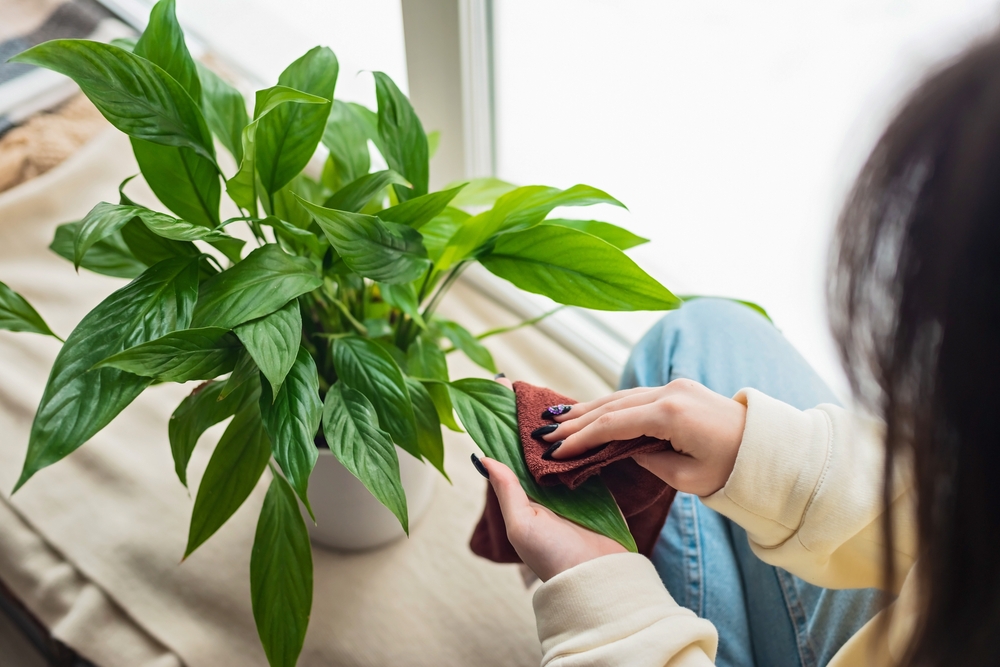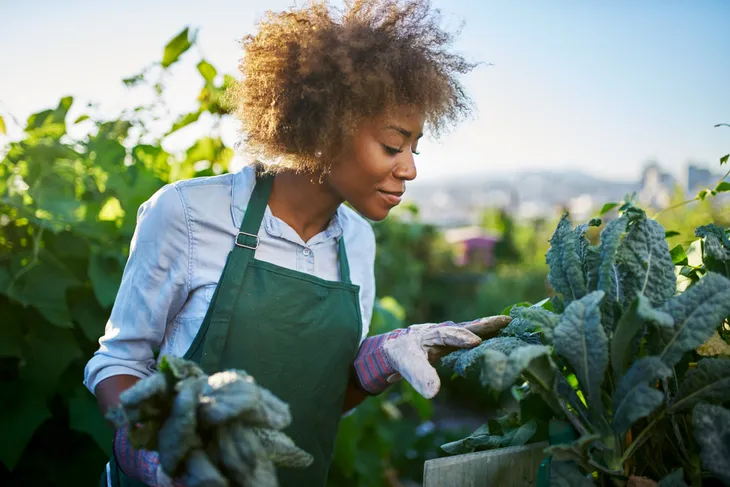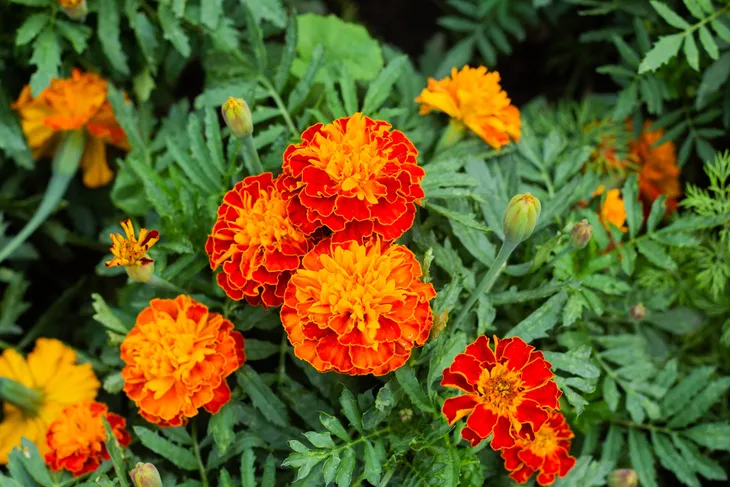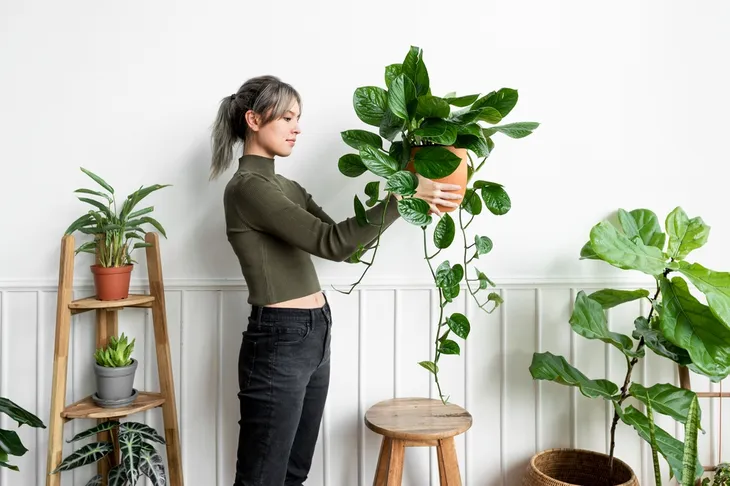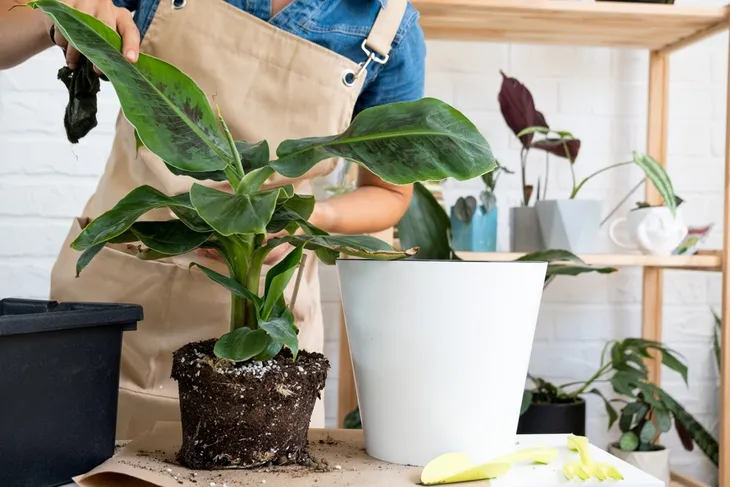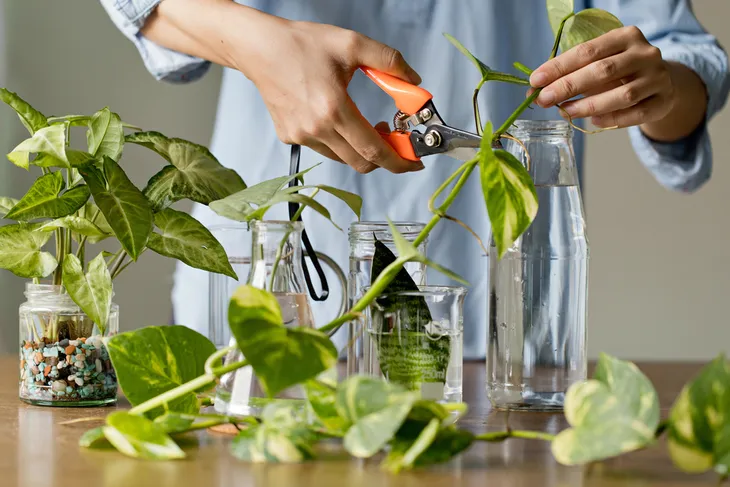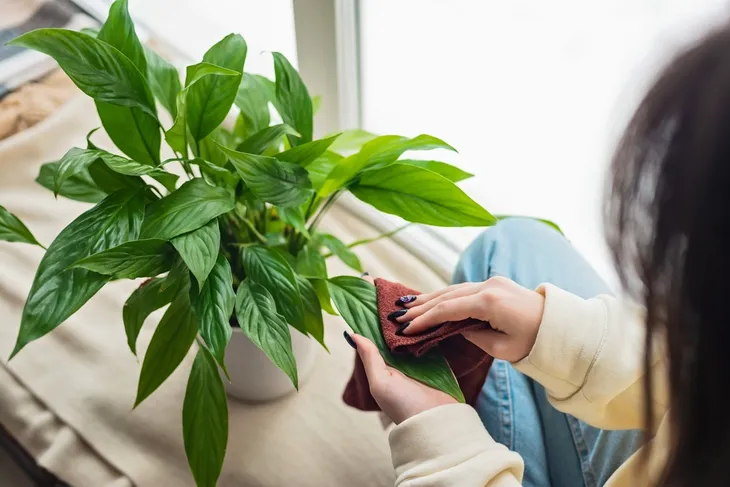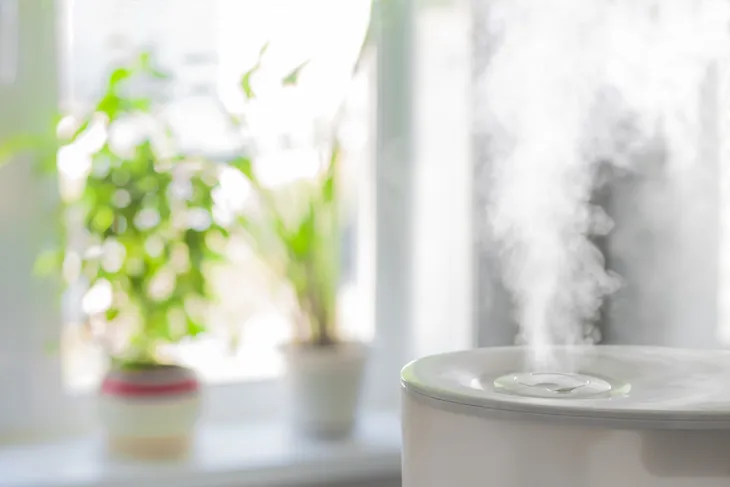- When the cooler weather approaches it’s important to bring your plants indoors.
- Plants can be temperamental and need to be brought indoors slowly and strategically. Otherwise, they’ll go into shock.
- There are many tips to consider, so be sure to plan ahead so you have ample time to transition your plants indoors before the colder weather starts.
Fall is arguably one of the most beautiful seasons. The crisp air, cozy clothing, and fall foliage are just a few of the things many people love about the season. However, the transition to autumn also means frost will be knocking at our doors — which can be a serious nightmare for the plants! Luckily, you can help some of your plants survive and thrive by transitioning them indoors before the colder weather arrives.
While you may be tempted to just drag those potted plants indoors and treat them like the rest of your indoor plants. Many outdoor plants will go into shock and throw a tantrum if they’re not tended to with care slowly and strategically. Follow along as we find out how to transition plants indoors before winter arrives.
When to Bring Plants Indoors for Colder Weather
Plants thrive outdoors during the summer months because of the warmer temperatures and higher humidity levels but when those temperatures start to drop, you’ll need to start transiting them indoors. But how cold is too cold for plants?
As a general rule, you should bring your potted plants indoors when the nighttime lows drop below 50-degrees Fahrenheit (10-degrees Celsius). The roots of potted plants are more exposed to colder temperatures than plants in the ground, which is why it’s important to bring them indoors.
Which Plants Need to Come Indoors for Colder Weather?
Each year it’s a good idea to evaluate your plants and decide which ones are worth keeping. Only keep healthy plants and get rid of the ones that are diseased or not thriving. It’s also important to know which plants can successfully make the transition indoors. According to the Almanac, there are two types of plants that should be brought inside.
The first is plants that require a winter dormancy period, such as calla lilies, dahlias, and elephant ears. The second type is plants that can continue to actively grow throughout the colder months, such as hibiscus, amaryllis, and rosemary. But this just brushes the surfaces on which plant varieties should come indoors. If you’re not sure if your plants need to come indoors, a quick search online will tell you.
 Shutterstock
ShutterstockWhich Plants Shouldn’t Be Brought Inside?
Not all plants should be brought inside. For example, the Garden Design says there’s no sense in bringing annuals like marigolds and zinnias indoors. The source explains that once annuals bloom and set seed, they’re destined to perish. The following are some plants that should be tossed instead of being brought inside:
- Angelonia
- Bacopa
- Cuphea
- Fuchsia
- Helichrysum
- Lantana
- Marigold
- Petunia
- Salvia
- Torenia
- Verbena
How to Transition Plants Indoors for Colder Weather
Once you’ve decided which plants to bring indoors, the next step is to make a plan to ensure they thrive all winter long. For starters, you’ll want to find an optimal place in your home that provides the plants with adequate sunlight. If the plant requires plenty of sunlight outdoors, it will require the same indoors.
It’s also important to avoid placing plants next to heaters as they can make the air hot and dry. And avoid placing them next to drafty windows where they might get too cold. Let’s take a look at more tips to consider when transitioning your plants indoors.
Wash the Plants and Get Rid of Bugs
Before bringing your plants inside, you’ll want to deal with any pests. Better Homes and Gardens says some common pets to look out for include aphids, scale, and spider mites.
If you notice any signs of pests, you’ll want to spray them with insecticidal soap, which can be found at your local home improvement or garden store. However, the source also says even if you don’t notice any signs of bugs, it’s still a good idea to wash your plants with the garden hose as an extra precaution.
Trim Damaged Leaves
After inspecting your plants for pests, it’s a good idea to assess their health. Look for signs of damaged or shriveled leaves and trim them if they’re present.
Not only can trimming damaged leaves improve their appearance, but your plant will benefit from it. When you trim the damaged parts of the plant, it allows the plant to focus all its energy on the healthier parts. Also, Better Homes and Gardens says torn leaves don’t heal so it’s best to just trim them off anyway.
Transition the Plants Slowly and Give Them Time to Acclimate
While you may be eager to bring your plants inside, it’s important to do it slowly. This allows them time to acclimate to their new environment and will reduce shock.
The Garden Design suggests starting by bringing the plants in at night when it’s cool and then back outside during the warm sunny hours of the day. Slowly increase the time they spend indoors until they’re indoors for the full day. Don’t forget to find a spot in your home that provides optimal sunlight.
Don’t Overwater
While all plants do need water to survive, some require less than others. Additionally, many plants go into hibernation mode during the winter, which means they require less water compared to the hot, summer months.
Watering your plants the same in the winter as you do in summer can cause water to accumulate, leading to rot and disease. So, with that in mind, it’s important to not overwater during the colder months.
A good way to tell if your plant needs water is to feel the soil an inch below the surface. If it’s dry, it needs water and if it’s moist it doesn’t. While there are, of course, exceptions to this rule, (some plants prefer moist soil while others prefer dry), it’s best to do your research and find out exactly what your type of plant needs during the winter.
Avoid Repotting and Don’t Fertilize
When bringing your plants indoors for the winter, it’s also important to avoid repotting them. This is because their rate of growth slows during the winter and repotting can cause stress. They’ll need all their strength during the winter months so don’t repot until the spring.
Again, since plants don’t actively grow during the winter, it’s also not necessary to fertilize them. But you can use your best discretion for this rule. If your plant is healthy, avoid the fertilizer until spring and summer but if you think your plant can benefit from some fertilizer, dilute it by 50-percent.
Consider Taking Cuttings
The Almanac suggests taking a cutting of your favorite plants as a precaution. In the event your plant doesn’t survive throughout the winter, you’ll have a cutting to try again. If you lack space, you could also keep the cutting over the winter and discard the rest of the plant to save some space. The source says the following are good steps to follow when taking a cutting:
- Choose healthy shoots and trim them roughly 2- to 3-inches below a leaf node and remove any lover leaves or buds.
- Place the cutting in a moistened rotting medium such as sterile potting mix, coarse sand, or vermiculite.
- Make sure at least one leaf node is below the surface of your medium of choice.
- Be sure to place the cutting in bright, indirect light.
- Maintain an even moisture level and cover the container with a plastic hood or clear bag to avoid moisture loss.
Don’t Forget to Clean the Leaves
When you clean your home don’t forget to clean your plants! Dust settles on your mantles and it also settles on your plants so it’s important to clean the leaves.
Though this can be a tedious task (especially if your plant has many leaves), it’s very important. Dust can block sunlight and reduce the plant’s ability to photosynthesize which is how it feeds itself, according to the Spruce. There are many ways to clean plants such as wiping them with a damp cloth, gently spraying them in the sink, using a spray bottle, or using a soft brush. Find a method that works best for you and your plants.
Other Winterizing Tips to Consider
While this is a great place to start, there are many other winterizing tips to consider. For starters, if you’re going on vacation for 2-weeks or more be sure to give your plants an extra soaking so they stay healthy while you’re away or have someone take care of them. Further, if your indoor air is too dry, consider using a humidifier to help add moisture to the air. A humidifier is not only good for your plants but for your health too!
The Almanac also says don’t forget to take care of your gardening supplies too. If temperatures drop below freezing, be sure to disconnect the garden hoses and fully drain them before putting them away. Plastic and wooden planters can stay outdoors but terracotta pots can crack in the cold so bring them inside. Finally, be sure to take care of your tools too. Clean and sharpen the tools and apply a light oil to preserve the metal. You should also clean wooden handles with an all-purpose cleaning and apply a wood preservative to prevent the wood from drying out.
